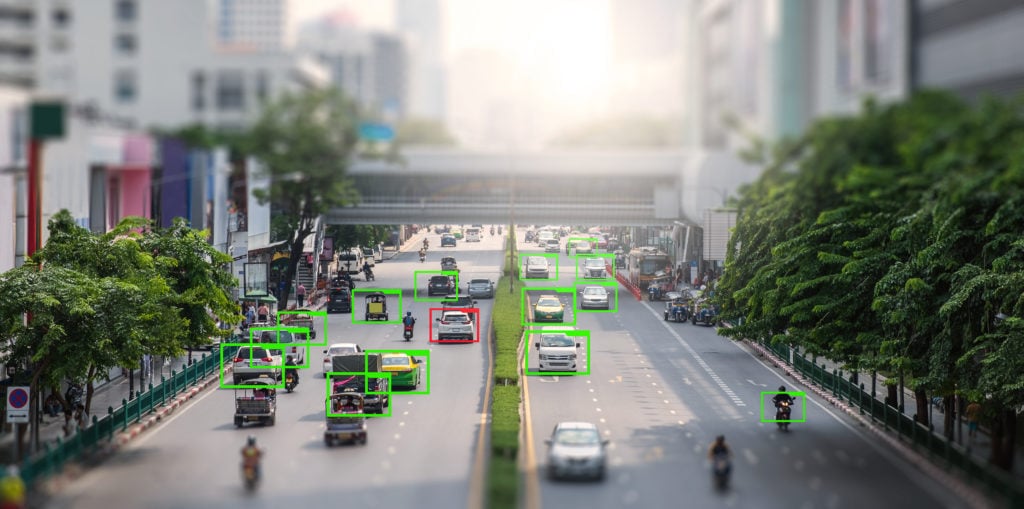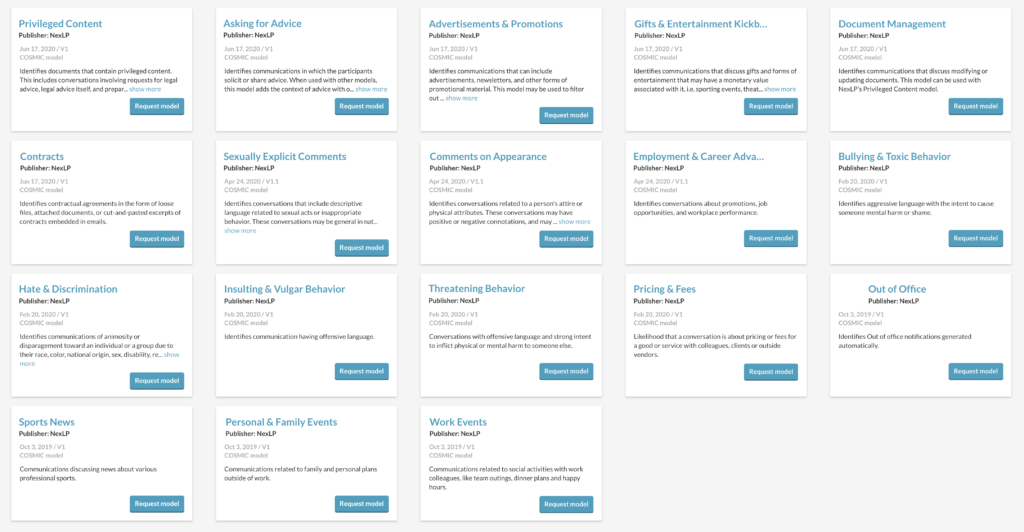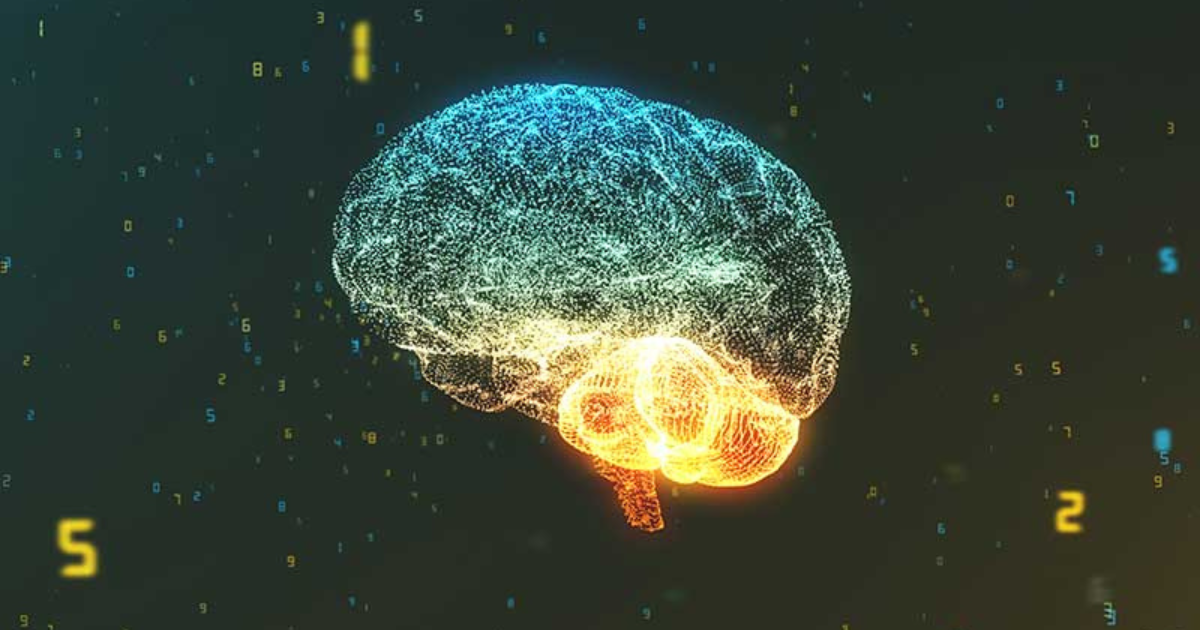AI in the Legal Sector – the Obvious Choice
Using AI in the legal sector should be obvious. A wide array of artificial intelligence technologies is there for the taking, offered by Reveal and many other legal technology companies. These AI tools aren’t the steam drill meant to send John Henry packing. They aren’t mysterious black boxes, producing dubious and unrepeatable results. And they certainly aren’t vaporware, existing only in developers’ imaginations or on PowerPoint slides but conspicuously absent from the real world.
Rather, AI tools are the modern legal professional’s tethered exoskeleton system. They work in parallel with legal teams’ current experience and abilities to provide an unprecedented level of expertise and acumen.
AI in the Legal Sector: What is AI, Anyway?
When it comes to defining artificial intelligence, confusion abounds.
Dartmouth professor John McCarthy first used the term “artificial intelligence” in a 1955 article, A Proposal for the Dartmouth Summer Research Project on Artificial Intelligence. He defined AI as:
the science and engineering of making intelligent machines, especially intelligent computer programs. It is related to the similar task of using computers to understand human intelligence, but AI does not have to confine itself to methods that are biologically observable.
IBM offers an updated definition:
In computer science, the term artificial intelligence (AI) refers to any human-like intelligence exhibited by a computer, robot, or other machine. In popular usage, artificial intelligence refers to the ability of a computer or machine to mimic the capabilities of the human mind—learning from examples and experience, recognizing objects, understanding and responding to language, making decisions, solving problems—and combining these and other capabilities to perform functions a human might perform, such as greeting a hotel guest or driving a car. (Emphasis added.)
For many, however, AI is “whatever a computer can’t do today,” as Thompson Reuters remarked in The meaning of artificial intelligence for legal researchers:
When an idea for an AI innovation is new, or sounds impossible, then it is referred to as AI. But once it’s commonplace, it’s considered to be just another piece of software – even when it continues to achieve the same simulation of human thought processes that it always did.
AI in the Legal Sector: Key Types of AI
AI technology fits into four categories: machine learning, natural language processing, computer vision, and robotics. We will focus on the first three, as legal professionals use them most frequently.
Machine Learning
With machine learning, AI algorithms “learn from past experiences and then apply this knowledge to predict future outcomes,” as Haynes & Boone counsel noted in a recent Legaltech News article, Brave New World: How AI Tools Are Used in the Legal Sector.
For legal professionals, two types of machine learning matter: unsupervised and supervised.
Unsupervised machine learning often is an exercise in having computers “tell me something I don’t know.” AI tools point computer algorithms at data. The algorithms organize that data based on patterns, similarities, and differences. The algorithms work on their own. They do not rely on people to train them. They are not subject to the same biases. But they can learn from their own past experience.
Supervised machine learning is a way to “find more like this.” With supervised machine learning, users train the system. […]
Natural Language Processing
“Natural language” refers to the languages people use, such as English, as opposed to the languages computers use. “Natural language processing” (NLP) refers to AI technology that analyzes and understands natural language.
Legal teams point NLP technology to text. The text comes from communications such as chats, emails, social media posts, Slack messages, and tweets. It comes from documents such as contracts, advertisements, instruction manuals, warning labels, even web pages. It even comes from structured databases.
NLP works with that text. It performs sentiment analysis, measures emotional signals, and summarizes blocks of text. It normalizes names, and it detects topics.
Computer Vision
Computer vision is a third form of artificial intelligence used in document review.
AI tools use images and deep learning models to recognize and label entities depicted in photos. Aimed at a single photo of a streetscape, for example, computer vision AI technology was able to identify and label over a dozen items. These tools can go farther. Some of them also can astute enough to identify which regions of an image represent which entity. Some image labeling models even recognize logos, ad, and other targeted types of images.

With image labeling technology, legal professionals can quickly select images likely to be relevant as well as exclude or deprioritize images not likely to be germane.
The Marriage of Machine Learning and Natural Language Processing: Reusable AI Models
Machine learning and natural language processing can be combined to create reusable AI models. Legal teams can use models built by others. If they have appropriate resources at their disposal, they also can build and run a wide array of their own models.
Legal firms use models to achieve many various objectives, fit various business models. They use these models to find potentially privileged content. They deploy models locate information that tends to support or refute asserted causes of actions and defenses to those causes. They run models to bring to light legal issues before those issues become formal complaints, bring on investigations, or led to lawsuits. They also turn to models to identify content unlikely to be of interest in an investigation or lawsuit. Examples of content not likely to be of interest include out-of-office messages and communications about sports, social activities, family, and personal plans.
If their legal technology permits, law firms and legal departments reuse AI models. They might run a single model multiple times over the live of a single matter. They might deploy many models in a single matter. They might also use the same model in different matters.
Law firms, legal departments, and service providers use models to identify conversations and communications:
- Involving privileged content such as requests for legal advice, legal advice itself, and documents used to prepare for depositions.
- Where participants solicit or share advice.
- Containing advertisements, newsletters, and other forms of promotional material.
- About gifts and forms of entertainment that might have monetary value such as tickets to sporting events, theater performances, and concerts.
- Containing descriptive language related to sexual acts or inappropriate behavior, including ones that are general in nature as well as ones that target a specific person or situation.
- Disparaging or suggesting animosity toward an individual or a group due to race, color, national origin, sex, disability, religion, or sexual orientation.
- With colleagues, clients, or outside vendors about pricing or fees for a good or service.

AI in the Legal Sector: Common Uses
Document Review and Analysis
Lawyers use AI in numerous ways to build their legal knowledge when conducting investigations and handling lawsuits. The best known and most widely promoted use is predictive coding (TAR 1.0, TAR 2.0, and their kin). It is far from the only use, however. In each of the examples below, Reveal has incorporated artificial intelligence to help lawyers and other legal professionals work better, faster, cheaper:
- Behavioral analytics: Analyze patterns across multilingual data to find key stories and events.
- Thread intelligence: Define connections between parties, both for 1:1 conversations and across multiple replies.
- Dataless classification: Recognize and understand business concepts hidden deep within documents.
- Faceted search: Surface hidden relationships between concepts, companies, locations, and people.
- Link chart analysis: Visually depict relationships between people and organizations visually, making communications patterns clearer.
- NLP-based TAR 2.0: Active and infinite learning using multiple classifiers and auto-calibration.
- Reusable AI models: As discussed above.
- Custodian recommendations: Apply NLP-based linguistic analysis to suggest potentially significant additional custodians.
- Sentiment analysis: Identify emotional content, its type, and its intensity, and display results visually.
Contract Review
A growing number of AI-enhanced offerings help folks in the legal sector do a better job of contract review, analysis, negotiation, and performance. JPMorgan has used a machine learning program called COIN (for COntract INtelligence) to interpret commercial loan agreements. KiraSystems offers a machine learning-based system designed to allow legal teams to identify concepts and clauses in contracts as well as spot issues and trends across agreements. The platform from LawGeex draws on AI technology to automate the contract review process.
Legal Research
ROSS Intelligence turns to AI to improve how lawyers conduct legal research, with question-based searching, highlighting that finds other decisions with similar language, automatic case summarization. LexisNexis’s Lex Machina platform mines docket entries and documents to provide insights on courts, judges, lawyers, law firms, and parties. Westlaw’s Quick Check Judicial lets judges and counsel find omitted relevant authorities and compare differences between case quotes and cited case language.
And So Much More
Artificial intelligence is incorporated into the practice of law for numerous other uses. The website Artificial Lawyer tracks nine categories of artificial intelligence-powered offerings, and lists over 80 companies. In addition to the three groupings listed above, the categories are:
Billing + Time Applications: Software that enables attorneys in law firms or at client to better understand and predict or model legal costs and staffing needs. Examples include Brightflag, DASH, and Digitory Legal.
Collaboration + Legal Data Platforms: Systems that help law firms and legal departments share, store, move, and gain visibility of key data. The three examples listed are Thomson Reuters’ HighQ, NetDocuments, and Ruby Datum.
Data Security + Risk Systems: Platforms focused on identifying potential data loss or legal risk in law firms’ and corporations’ day-to-day operations. Here, only two examples are shown: Intraspexion and Tessian.
Expert Systems: Rules-based trained or pre-set systems that allow lawyers and others to get answers to legal questions or be guided through the completion of a legal process. Examples include Access to Justice Author (A2J Author), BRYTER, and Neota Logic.
Smart Contracts + Blockchain: Smart contracts refers to technology lawyers use to create contracts with self-executing elements. Examples are Clause, LegalThings, and Monax. Blockchain refers to platforms and applications incorporating that technology. Examples are Legaler and OpenLaw.
Workflow Automation: Technology systems legal practitioners use to at least partially automate legal work flows such as deals, transactions, or patent processes. Examples include iManage’s Closing Folders, Intapp, and Legatics.
How Advances in AI in Legal Sector Will Change How Legal Professionals Work
How will advances in artificial intelligence in the legal sector change the ways legal professionals work? The short answer: In many ways, and a lot. But there is a longer, more useful response.
First, the change already has begun. Traditionally, lawyers, paralegals and others in law firms and legal departments relied heavily on a narrow range of tools to deliver their professional services: Yellow pads and Dictaphones. Physical libraries chock-a-block full of casebooks and treatises. Form books and filing cabinets containing exemplars from past cases. Typewriters.
A lot has changed. Today almost every lawyer uses a computer, a tablet, a cell phone. Attorneys draft pleadings in Word, often taking advantages of specialized additional programs. They turn to searchable electronic document management systems. On-line legal research is a given. Storage happens in the cloud, not in a filing cabinet.
And the legal industry uses AI. eDiscovery, document review, contract review, due diligence – these are just a few of the areas where AI tools already are being deployed.
So, what next? No one can accurately predict the future, of course, but we can gaze with cataract eyes into a murky crystal ball and offer some thoughts.
A Tethered Exoskeleton System
First, AI technology will provide human lawyers – and all legal professionals – with Professor Hugh Herr’s tethered exoskeleton system.
AI tools will work in parallel with attorneys, paralegals, and other law firm, legal department, and ALSP, and service provider personnel to provide an unprecedented level of functionality. And it will do so without discomfort or inhibiting the approaches those folks naturally take.
They will let attorneys work with unfathomably huge volumes of data. They will deal effectively not just the gigabytes or terabytes of ESI we tackle today. They will be able to handle petabytes and exabytes will ease.
They will let counsel find insights previously unavailable to them. They will do this by combining sentiment analysis, automatic translations, predictive analytics, and a plethora of AI capabilities. And they will do this by looking back at enormous stores of pseudonymized historical data, and comparing that against data currently being acquired or generated.
A Stronger Safety Net
AI programs will be Atul Gawande’s Checklist Manifesto on steroids. They will help us avoid what Gawande called “errors in ineptitude”, mistakes we make because we don’t make proper use of what we know.
They will accomplish this going beyond static lists of things you need to do, such as a providing the other side with a Rule 26(a)(1) initial disclosure without awaiting a discovery request. Instead, they will provide automatically customized dynamic checklists. They will offer suggests for how to most effectively complete the items on the lists. They will track progress. They will offer course corrections. But they will only offer guidance and a safety net. They will leave the actual decision-making to humans, not machines.
How You Can Know AI in Legal Sector Can be Trusted
How do we know we can trust artificial intelligence in the legal sector?
While much has been written about AI and trust, we will focus on two sets of materials. As these materials emphasize, there is no single correct way to ascertain the trustworthiness of AI technology, whether designed for legal or for some other use.
In a 2019 paper, IBM researchers suggested declarations of conformity as a way to increase trust in AI services. The authors listed several traits likely to imbue trustworthiness: fairness, explainability, general safety, security, and transparency.
The authors of a recent draft National Institute of Standards paper wrote that at least five properties characterize trust in AI systems: explainability, resiliency, reliability, bias, and accountability. The authors focused on explainability, offering four principles:
- Explanation: An AI system should deliver accompanying evidence or reasons for all outputs.
- Meaningful: An AI systems should provide explanations that are understandable to individual users.
- Explanation Accuracy: Each explanation should correctly reflect the AI system’s process for generating the output.
- Knowledge Limits: The AI system should only operate under conditions for which it was designed or when the system reaches a sufficient confidence in its output.
We return to the question, how do we know we can trust AI in the legal sector? Three steps will take you a long way. First, start with the traits and properties listed above and discussed in detail in the source documents. They will serve as useful guides.
Second, apply common sense. Look at your inputs. Consider the questions you are trying to address. Evaluate the output. If the output does not seem to make sense, given the inputs and the objectives, take a closer look. You may find a problem with inputs or questions. You might discover an apparent shortcoming in AI. You might realize that, on closer examination, the results really do make sense.
Finally, try a hedge technology. Starting with the same data, or perhaps just a subset of it, and the same objective, use a completely different class of tool. I have, for example, used Boolean searching as a hedge technology when evaluating the results of a predictive coding process. Comparing results probably will take you a long way toward determining how much you can trust a particular AI tool.
How Reveal’s AI in Legal Sector Compares
Many modern eDiscovery processing, review, and analytics platforms incorporate some amount of AI. If you are using something other than Reveal, measure it up against these questions:
- Is AI an integral part of the platform, or an add-on?
- Is AI used at multiple points in the process, or only for predictive coding?
- Does the platform use linguistic intelligence to analyze email and document text?
- Does the platform use content classification to understand unsupervised and supervised data?
- Does the platform use emotional intelligence to detect sentiments and fraud signals?
- Can TAR be used with multiple classifiers?
- Does the TAR workflow incorporate auto-calibration?
- Does the platform use behavioral intelligence to conduct anomaly detection and social network analysis?
- Does the platform offer reusable AI models that can be used for a variety of purposed, such as to identify privileged content?
- Does the platform give you the ability to create custom reusable AI models?
Will the system recommend additional custodians who data you might want to explore?
If your organization is interested in leveraging the power of legal AI software, contact Reveal to learn more. We’ll be happy to show you how our authentic artificial intelligence takes review to the next level, with our AI-powered, end-to-end document review platform.

